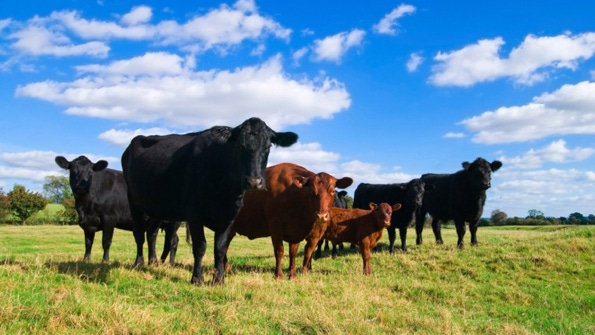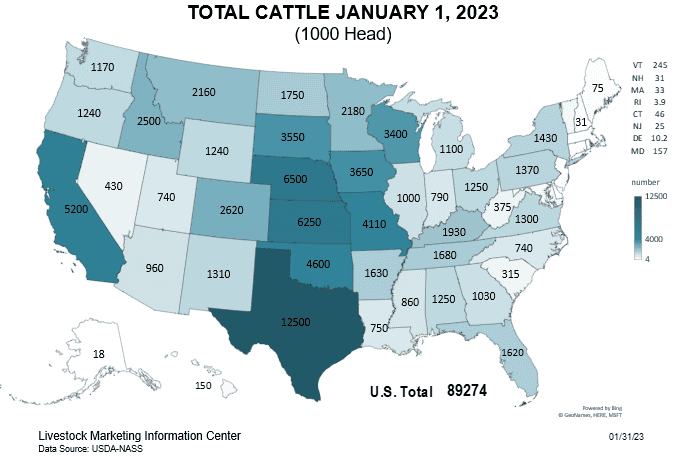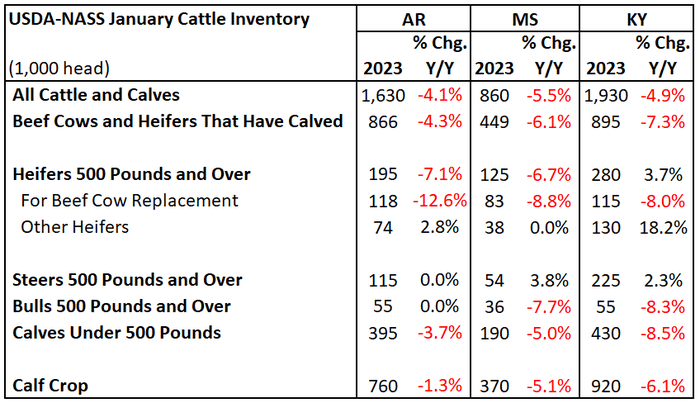Cattle inventory in the Southeast
Large declines in replacement heifer numbers may limit options for herd expansion through 2024.
February 15, 2023

The January Cattle Inventory report provides us with the most detailed view of the cattle industry we will get all year. Last week’s article reviewed the national numbers. This week’s article looks at the state-level data for Arkansas, Kentucky, and Mississippi. For perspective, comparisons are made with the national data.

Arkansas, Kentucky, and Mississippi were not exceptions to the general findings in the Cattle Inventory report. Another year of herd liquidation. In Arkansas, all cattle and calves inventory declined by 70 thousand head or 4.1% to a total of 1.63 million head. Total cattle inventories in Mississippi totaled 860 thousand head, a 5.5% decline year over year. Kentucky cattle inventories declined by 4.9% and totaled 1.93 million head. All three states had larger percentage declines than the national estimate of 3%.
The Arkansas beef cow herd declined by 4.3% to 866 thousand head. Mississippi beef cow numbers declined by 29 thousand head or 6.1%. The Kentucky beef cow herd totaled 895 thousand head, a 7.3% decline year over year. Arkansas, Kentucky, and Mississippi account for 2.21 million beef cows or 8% of the national beef cow herd.
Large declines in replacement heifer numbers may limit options for herd expansion through 2024. Arkansas was one of 14 states with a double-digit drop in beef replacement heifer numbers. The other states include Delaware, Georgia, Idaho, Iowa, Kansas, Maine, Maryland, Massachusetts, Michigan, North Dakota, Ohio, Texas, and Virginia. Beef replacement heifers declined 8.8% in Mississippi and 8.0% in Kentucky.
The report also included estimates of the 2022 calf crop for each state. Nationally, the calf crop was 2% lower in 2022 than in 2021. The Arkansas estimate was 760 thousand calves born during 2022 which was only a 1.3% decline. The Mississippi estimate was 370 thousand calves (a 5.1% decline) and the Kentucky estimate was 920 thousand (a 6.1% decline).
The declines in beef cows and replacement heifers suggests the stage is already set for an even smaller calf crop nationally in 2023. There will be state-level differences, especially if drought conditions continue in some regions. Tighter calf supplies are a big reason for the stronger cattle price expectations in 2023 and 2024. Feeder cattle futures prices for the fall months are above $210. These are levels not seen since 2014 and 2015 as the market prices in the expectation of tighter supplies.
The USDA report is summarized in the table below and the full report can be accessed here.

You May Also Like


.png?width=300&auto=webp&quality=80&disable=upscale)
